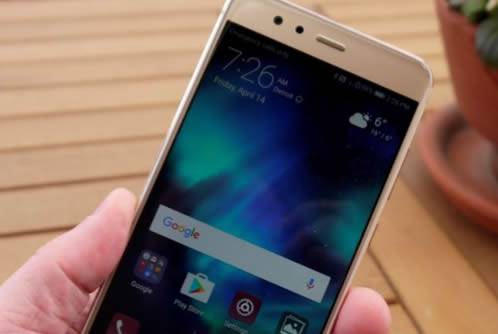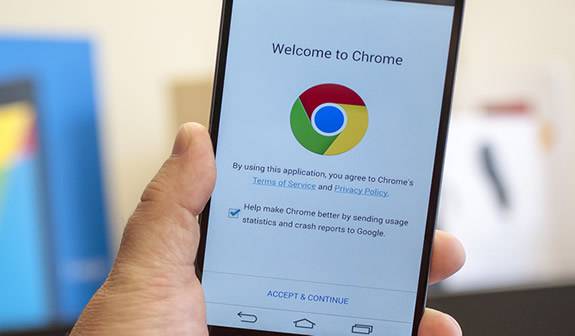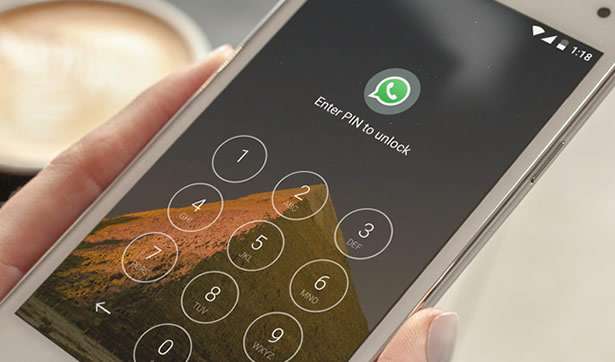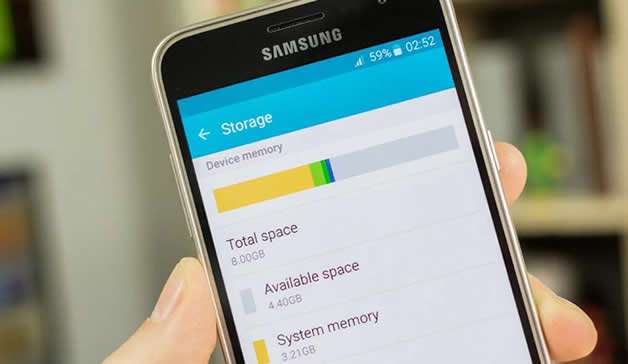Deleting the password on your Android phone can be useful if you no longer need the added security or find it cumbersome to enter the password every time you unlock your device. Whether you want to switch to a different screen lock method or remove the password altogether, this tutorial will guide you through the necessary steps. Follow the instructions below to delete the password on your Android phone.
Step 1: Open the Settings app on your Android phone. You can usually find it in your app drawer or by swiping down from the top of the screen and tapping on the gear-shaped icon.
Step 2: In the Settings menu, scroll down and select “Security” or “Biometrics and security,” depending on your Android version.
Step 3: Within the Security settings, look for an option called “Screen lock” or “Lock screen.” Tap on it to proceed.
Step 4: You may be prompted to enter your current password, PIN, or pattern to verify your identity.
Step 5: Once you have confirmed your identity, you will see different screen lock options such as Swipe, Pattern, PIN, Password, or None. Choose the “None” option or any other desired method that does not require a password.
Step 6: If you select “None,” you may receive a warning message about the security risks of not having a lock screen. Review the message and tap “OK” or “Continue” to proceed without a password.
Step 7: Finally, confirm your choice by following the on-screen prompts or tapping “OK” when asked if you want to disable the password.
| Pros | Cons |
|---|---|
| 1. Eliminates the need to enter a password every time you unlock your Android phone. | 1. Reduced security as anyone can access your device without authentication. |
| 2. Faster and more convenient access to your phone’s features and apps. | 2. Increased vulnerability to unauthorized access if your device gets lost or stolen. |
| 3. Easier for individuals with difficulty remembering passwords or using complex lock screen methods. | 3. Loss of certain security features like remote wipe or biometric authentication. |
Video Tutorial: Where can I find my stored passwords?
How do I take a password off my phone?
To disable the password on your iPhone, follow these steps:
1. Open the Settings app on your iPhone. It’s represented by an icon with gears.
2. Scroll down and tap on “Face ID & Passcode” or “Touch ID & Passcode,” depending on your iPhone model and version of iOS.
3. You may be prompted to authenticate with your current passcode or biometric authentication (Face ID or Touch ID).
4. Once you’ve authenticated, scroll down and locate the section titled “Unlock with Passcode” or “Require Passcode.”
5. Tap on “Turn Passcode Off” or “Disable Passcode,” whichever option is available.
6. You’ll be asked to confirm your decision to remove the passcode by entering your existing passcode one more time.
7. After successfully confirming, the passcode will be disabled, and you will no longer need to enter a password to unlock your iPhone.
8. It’s worth noting that disabling the passcode removes an essential security feature from your device, leaving it vulnerable to unauthorized access. Consider the potential risks before removing the passcode entirely.
Remember, it’s always a good idea to safeguard your personal data by utilizing other security features like biometric authentication or PIN codes, especially if your device contains sensitive information.
How do I change my lock screen password on Android?
Changing the lock screen password on an Android device is a straightforward process. Here are the steps you can follow:
Step 1: Unlock your Android device by entering your current lock screen password or pattern.
Step 2: Open the Settings app. You can find it in the app drawer or by swiping down on the notification panel and tapping the gear-shaped Settings icon.
Step 3: In the Settings menu, scroll down and locate the “Security” or “Biometrics and Security” option. Tap on it to access the security settings.
Step 4: Look for the “Screen lock” or “Lock screen” option. The specific wording may vary depending on the Android version or device manufacturer. Tap on it to proceed.
Step 5: You may need to enter your current lock screen password, PIN, or pattern to verify your identity.
Step 6: Once verified, you’ll see various lock screen options, such as Pattern, PIN, Password, or Biometrics (if your device supports fingerprint or facial recognition). Select the lock screen type you want to use.
Step 7: Follow the prompts to set up your new lock screen password. This could involve inputting a new PIN, pattern, or password, depending on the option you chose.
Step 8: After setting up the new lock screen password, confirm it, and you will have successfully changed your lock screen credentials.
It’s worth noting that the steps may slightly vary across different Android versions and device manufacturers, but the general process remains consistent. Always ensure you remember your new password to avoid getting locked out of your device.
Remember, maintaining a secure lock screen password is essential to protect your personal data and ensure the privacy of your Android device.
How can I remove my Android password without resetting?
As a tech blogger, I can provide you with steps and options to remove your Android password without resetting your device. Here are a few methods you can try:
1. Use Android Device Manager: If you have previously set up Android Device Manager, you can use it to remotely reset your lock screen password. Follow these steps:
a. Visit the Android Device Manager website on a computer or another device.
b. Log in with the same Google account linked to your locked Android device.
c. Select your device from the list shown.
d. Click on “Lock” and enter a temporary password.
e. Follow the on-screen instructions to set a new lock screen password.
f. Once done, your device should be unlocked with the new password.
2. Use Samsung Find My Mobile: If you own a Samsung device and have registered for Samsung’s Find My Mobile service, you can utilize this feature to remotely remove the lock screen password. Follow these steps:
a. Visit the Find My Mobile website on a computer or another device.
b. Sign in with your Samsung account associated with your locked device.
c. Select your device from the list of registered devices.
d. Click on “Unlock my device.”
e. Follow the on-screen instructions to complete the process.
3. Use a third-party screen unlock tool: There are various third-party software tools available that claim to unlock Android devices without data loss. While these tools may work in some cases, it’s essential to exercise caution and ensure you choose a reputable and reliable tool. Research and read reviews before selecting any specific tool.
Note: It’s important to mention that attempting to bypass screen locks or using third-party tools may have privacy and security risks. It’s always recommended to backup your data regularly to avoid potential data loss in case anything goes wrong.
Remember to stay informed about the latest developments, updates, and security measures related to your specific Android device and its operating system version.
How do I turn off saved passwords?
To turn off saved passwords on your device, follow these steps:
1. On iOS (iPhone 14):
– Open the Settings app.
– Scroll down and tap on “Passwords”.
– Authenticate using your device passcode, Face ID, or Touch ID.
– Under the “WEBSITE & APP PASSWORDS” section, you’ll see a list of saved passwords.
– Tap on the website or app for which you want to turn off the saved password.
– Tap on the “Edit” button in the top-right corner.
– Tap on the red minus icon next to the saved password you want to delete.
– Finally, tap on “Delete” to confirm the removal of the saved password.
2. On Android (assuming the latest version supports these steps):
– Open the Settings app.
– Scroll down and tap on “Biometrics and Security” or “Security”.
– Tap on “Passwords” or “Autofill”.
– Select “Autofill with Google” or your preferred autofill provider.
– Tap on “Passwords” and authenticate if required.
– Find the website or app for which you want to disable the saved password.
– Tap on the three-dot menu or the settings icon next to it.
– Select “Remove” or “Delete” to delete the saved password.
Alternatively, you can also use a password manager app or your browser’s settings to disable saved passwords. Keep in mind that these steps may vary slightly depending on your device’s make, model, and operating system version.
Where are passwords stored on Android phone?
On an Android phone, passwords are typically stored in a secure location within the device’s system. Here are the steps explaining where passwords are commonly stored on an Android phone:
1. Keystore: Android provides a built-in keystore system that allows apps to securely store encryption keys, certificates, and other sensitive data. Passwords used by apps may be stored in this keystore, which provides a protected environment for sensitive information.
2. Credential storage: Android also offers a Credential Storage feature that allows users to securely store various types of credentials, including passwords. This storage is typically used when passwords are saved for Wi-Fi networks, VPNs, and other system-level credentials.
3. Password Managers: Many users choose to use password manager apps on Android devices. These apps securely store passwords and provide convenient auto-fill functionality across multiple apps and websites. The passwords are typically encrypted and stored within the password manager app itself.
4. App-specific storage: Some apps may have their own internal mechanism for securely storing user passwords. In such cases, the passwords are usually encrypted and saved within the app’s storage area. These app-specific storage locations can vary depending on the app’s architecture and design.
Overall, it’s important to note that Android focuses on security and provides various mechanisms to protect user passwords and sensitive information. The exact location of stored passwords can depend on the type of credential, the app or system-level feature being used, and the security measures implemented by the device and app developers.
Where are my passwords located?
Passwords are a crucial part of our online security, and it’s essential to know where they are stored to ensure their safety. Here are the common places where passwords may be stored:
1. Password Managers: Many people use password managers to store and organize their passwords securely. Password managers like LastPass, Dashlane, or 1Password encrypt your passwords and store them in a vault. They usually require a master password or biometric authentication to access your stored passwords. These tools offer convenient features like password generation, autofill, and synchronization across devices.
2. Web Browsers: Web browsers often offer a built-in password management feature that can store and auto-fill your passwords. Browsers like Chrome, Firefox, Edge, or Safari prompt you to save passwords when you log in to a website for the first time. However, it’s important to note that browser-stored passwords might be less secure compared to dedicated password managers.
3. Cloud Storage: Some individuals may opt to store their passwords in cloud storage services like Google Drive, Dropbox, or iCloud. This approach allows access to passwords across multiple devices or to share them with trusted individuals. However, it’s necessary to encrypt the file containing your passwords to maintain their security.
4. Local Files: Some people prefer to store their passwords in local files on their devices. These files can be simple text documents, spreadsheets, or encrypted files. However, it’s crucial to protect these files with strong encryption and keep backups in case of data loss or device failure. Additionally, ensure that unauthorized individuals cannot access these files.
5. Memory: Many individuals rely on memorization to remember their passwords. While this eliminates the need for external storage, it can be challenging to remember complex and unique passwords for multiple accounts. It’s advisable to use strong and distinct passwords and avoid using personal information or easily guessable patterns.
Regardless of where your passwords are located, it’s crucial to follow good security practices to protect your accounts:
a) Use strong and unique passwords for each account.
b) Enable two-factor authentication whenever possible.
c) Regularly update your passwords.
d) Be cautious while using public Wi-Fi and ensure secure connections (HTTPS).
e) Use reputable and up-to-date security software to protect against malware and phishing attempts.
Remember, protecting passwords is essential as they safeguard your sensitive information and digital presence.
{“@context”:”https://schema.org”,”@type”:”FAQPage”,”mainEntity”:[{“@type”:”Question”,”name”:”How do I take a password off my phone?”,”acceptedAnswer”:{“@type”:”Answer”,”text”:”To disable the password on your iPhone, follow these steps:nn1. Open the Settings app on your iPhone. It’s represented by an icon with gears.n2. Scroll down and tap on “Face ID & Passcode” or “Touch ID & Passcode,” depending on your iPhone model and version of iOS.n3. You may be prompted to authenticate with your current passcode or biometric authentication (Face ID or Touch ID).n4. Once you’ve authenticated, scroll down and locate the section titled “Unlock with Passcode” or “Require Passcode.”n5. Tap on “Turn Passcode Off” or “Disable Passcode,” whichever option is available.n6. You’ll be asked to confirm your decision to remove the passcode by entering your existing passcode one more time.n7. After successfully confirming, the passcode will be disabled, and you will no longer need to enter a password to unlock your iPhone.n8. It’s worth noting that disabling the passcode removes an essential security feature from your device, leaving it vulnerable to unauthorized access. Consider the potential risks before removing the passcode entirely.nnRemember, it’s always a good idea to safeguard your personal data by utilizing other security features like biometric authentication or PIN codes, especially if your device contains sensitive information.”}},{“@type”:”Question”,”name”:”How do I change my lock screen password on Android?”,”acceptedAnswer”:{“@type”:”Answer”,”text”:”Changing the lock screen password on an Android device is a straightforward process. Here are the steps you can follow:nnStep 1: Unlock your Android device by entering your current lock screen password or pattern.nnStep 2: Open the Settings app. You can find it in the app drawer or by swiping down on the notification panel and tapping the gear-shaped Settings icon.nnStep 3: In the Settings menu, scroll down and locate the “Security” or “Biometrics and Security” option. Tap on it to access the security settings.nnStep 4: Look for the “Screen lock” or “Lock screen” option. The specific wording may vary depending on the Android version or device manufacturer. Tap on it to proceed.nnStep 5: You may need to enter your current lock screen password, PIN, or pattern to verify your identity.nnStep 6: Once verified, you’ll see various lock screen options, such as Pattern, PIN, Password, or Biometrics (if your device supports fingerprint or facial recognition). Select the lock screen type you want to use.nnStep 7: Follow the prompts to set up your new lock screen password. This could involve inputting a new PIN, pattern, or password, depending on the option you chose.nnStep 8: After setting up the new lock screen password, confirm it, and you will have successfully changed your lock screen credentials.nnIt’s worth noting that the steps may slightly vary across different Android versions and device manufacturers, but the general process remains consistent. Always ensure you remember your new password to avoid getting locked out of your device.nnRemember, maintaining a secure lock screen password is essential to protect your personal data and ensure the privacy of your Android device.”}},{“@type”:”Question”,”name”:”How can I remove my Android password without resetting?”,”acceptedAnswer”:{“@type”:”Answer”,”text”:”As a tech blogger, I can provide you with steps and options to remove your Android password without resetting your device. Here are a few methods you can try:nn1. Use Android Device Manager: If you have previously set up Android Device Manager, you can use it to remotely reset your lock screen password. Follow these steps:n a. Visit the Android Device Manager website on a computer or another device.n b. Log in with the same Google account linked to your locked Android device.n c. Select your device from the list shown.n d. Click on “Lock” and enter a temporary password.n e. Follow the on-screen instructions to set a new lock screen password.n f. Once done, your device should be unlocked with the new password.nn2. Use Samsung Find My Mobile: If you own a Samsung device and have registered for Samsung’s Find My Mobile service, you can utilize this feature to remotely remove the lock screen password. Follow these steps:n a. Visit the Find My Mobile website on a computer or another device.n b. Sign in with your Samsung account associated with your locked device.n c. Select your device from the list of registered devices.n d. Click on “Unlock my device.”n e. Follow the on-screen instructions to complete the process.nn3. Use a third-party screen unlock tool: There are various third-party software tools available that claim to unlock Android devices without data loss. While these tools may work in some cases, it’s essential to exercise caution and ensure you choose a reputable and reliable tool. Research and read reviews before selecting any specific tool.nnNote: It’s important to mention that attempting to bypass screen locks or using third-party tools may have privacy and security risks. It’s always recommended to backup your data regularly to avoid potential data loss in case anything goes wrong.nnRemember to stay informed about the latest developments, updates, and security measures related to your specific Android device and its operating system version.”}},{“@type”:”Question”,”name”:”How do I turn off saved passwords?”,”acceptedAnswer”:{“@type”:”Answer”,”text”:”To turn off saved passwords on your device, follow these steps:nn1. On iOS (iPhone 14):n – Open the Settings app.n – Scroll down and tap on “Passwords”.n – Authenticate using your device passcode, Face ID, or Touch ID.n – Under the “WEBSITE & APP PASSWORDS” section, you’ll see a list of saved passwords.n – Tap on the website or app for which you want to turn off the saved password.n – Tap on the “Edit” button in the top-right corner.n – Tap on the red minus icon next to the saved password you want to delete.n – Finally, tap on “Delete” to confirm the removal of the saved password.nn2. On Android (assuming the latest version supports these steps):n – Open the Settings app.n – Scroll down and tap on “Biometrics and Security” or “Security”.n – Tap on “Passwords” or “Autofill”.n – Select “Autofill with Google” or your preferred autofill provider.n – Tap on “Passwords” and authenticate if required.n – Find the website or app for which you want to disable the saved password.n – Tap on the three-dot menu or the settings icon next to it.n – Select “Remove” or “Delete” to delete the saved password.nnAlternatively, you can also use a password manager app or your browser’s settings to disable saved passwords. Keep in mind that these steps may vary slightly depending on your device’s make, model, and operating system version.”}},{“@type”:”Question”,”name”:”Where are passwords stored on Android phone?”,”acceptedAnswer”:{“@type”:”Answer”,”text”:”On an Android phone, passwords are typically stored in a secure location within the device’s system. Here are the steps explaining where passwords are commonly stored on an Android phone:nn1. Keystore: Android provides a built-in keystore system that allows apps to securely store encryption keys, certificates, and other sensitive data. Passwords used by apps may be stored in this keystore, which provides a protected environment for sensitive information.nn2. Credential storage: Android also offers a Credential Storage feature that allows users to securely store various types of credentials, including passwords. This storage is typically used when passwords are saved for Wi-Fi networks, VPNs, and other system-level credentials. nn3. Password Managers: Many users choose to use password manager apps on Android devices. These apps securely store passwords and provide convenient auto-fill functionality across multiple apps and websites. The passwords are typically encrypted and stored within the password manager app itself.nn4. App-specific storage: Some apps may have their own internal mechanism for securely storing user passwords. In such cases, the passwords are usually encrypted and saved within the app’s storage area. These app-specific storage locations can vary depending on the app’s architecture and design.nnOverall, it’s important to note that Android focuses on security and provides various mechanisms to protect user passwords and sensitive information. The exact location of stored passwords can depend on the type of credential, the app or system-level feature being used, and the security measures implemented by the device and app developers.”}},{“@type”:”Question”,”name”:”Where are my passwords located?”,”acceptedAnswer”:{“@type”:”Answer”,”text”:”Passwords are a crucial part of our online security, and it’s essential to know where they are stored to ensure their safety. Here are the common places where passwords may be stored:nn1. Password Managers: Many people use password managers to store and organize their passwords securely. Password managers like LastPass, Dashlane, or 1Password encrypt your passwords and store them in a vault. They usually require a master password or biometric authentication to access your stored passwords. These tools offer convenient features like password generation, autofill, and synchronization across devices.nn2. Web Browsers: Web browsers often offer a built-in password management feature that can store and auto-fill your passwords. Browsers like Chrome, Firefox, Edge, or Safari prompt you to save passwords when you log in to a website for the first time. However, it’s important to note that browser-stored passwords might be less secure compared to dedicated password managers.nn3. Cloud Storage: Some individuals may opt to store their passwords in cloud storage services like Google Drive, Dropbox, or iCloud. This approach allows access to passwords across multiple devices or to share them with trusted individuals. However, it’s necessary to encrypt the file containing your passwords to maintain their security.nn4. Local Files: Some people prefer to store their passwords in local files on their devices. These files can be simple text documents, spreadsheets, or encrypted files. However, it’s crucial to protect these files with strong encryption and keep backups in case of data loss or device failure. Additionally, ensure that unauthorized individuals cannot access these files.nn5. Memory: Many individuals rely on memorization to remember their passwords. While this eliminates the need for external storage, it can be challenging to remember complex and unique passwords for multiple accounts. It’s advisable to use strong and distinct passwords and avoid using personal information or easily guessable patterns.nnRegardless of where your passwords are located, it’s crucial to follow good security practices to protect your accounts:nna) Use strong and unique passwords for each account.nb) Enable two-factor authentication whenever possible.nc) Regularly update your passwords.nd) Be cautious while using public Wi-Fi and ensure secure connections (HTTPS).ne) Use reputable and up-to-date security software to protect against malware and phishing attempts.nnRemember, protecting passwords is essential as they safeguard your sensitive information and digital presence.”}}]}







